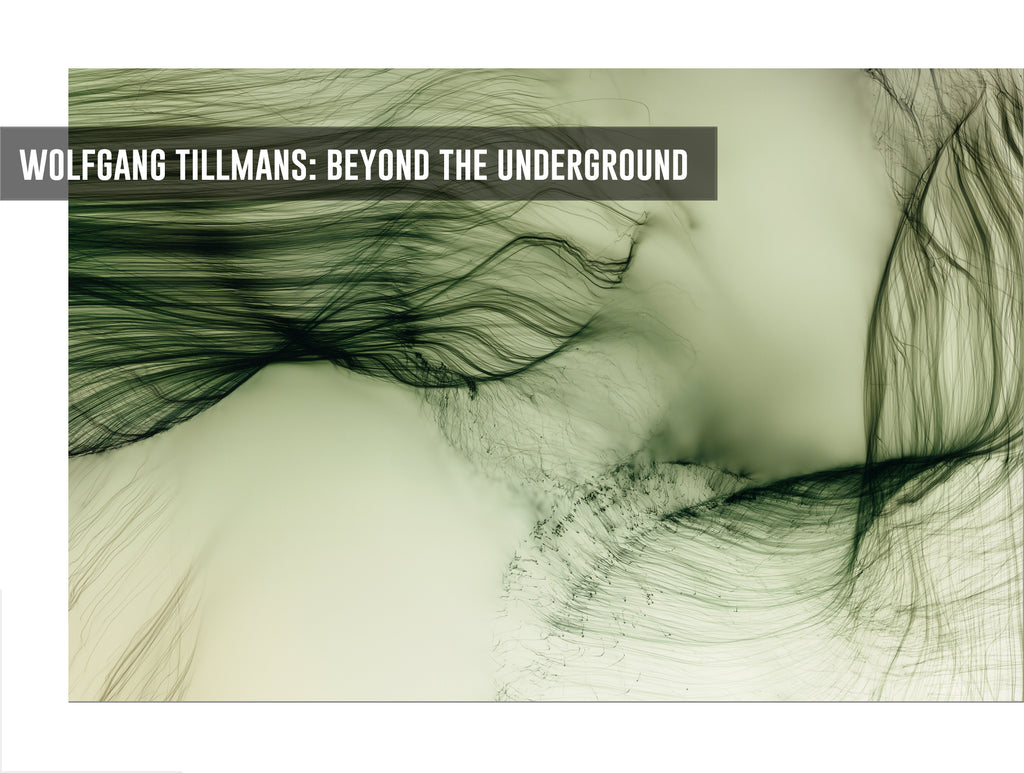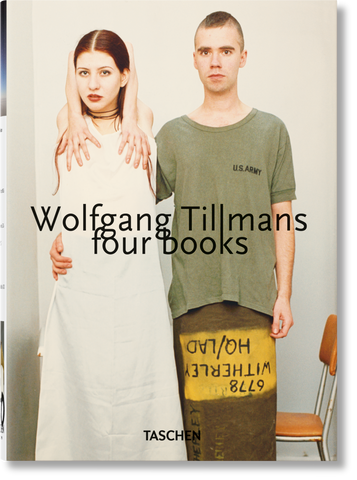Wolfgang Tillmans: Beyond the Underground
Posted on March 25 2021

And even more: celebrities, still lifes, landscapes, astronomical images, objects, intimate portraits, collages, and even neo hybrid images produced by the superimposition of one photograph on top of another.
Apparently there is no single key to their interpretation other than the fact that they are images themselves, an unprecedented event in an era in which most of the photographs in circulation are born with a very specific message already behind them.
Nevertheless Tillmans, who was born in Remscheid in West Germany in 1968, began his artistic career by framing himself in a specific genre, Street Photography adapted to the underground culture developed in Europe in the nineties, especially in Berlin and London.
Gay clubs, the famous series of portraits dedicated to his friends Lutz and Alex published in ID magazine in 1992, with moving bodies dancing in the clubs, genuinely torn clothes, .....penises ......photographed in the foreground: all portraits of a spontaneous everyday life that, similarly to the works of Nan Goldin, show an unrepeatable era and social substratum. Except for the fact that it's all a misunderstanding.
It would be too easy to define the artist as a witness of a historical period, and too superficial to summarize his vision as an act of mnemonic conservation.
Naturalness in Tillmans' works is a well-structured trick, as the composition of each individual portrait was elaborated through careful scrutiny of the pose and clothing of his models.
The photographer has subsequently and frequently re-used the same images in different installations and collages, recombining them with other photographs according to different levels of interpretation, like words that, from time to time, are linked together in different sentences to generate new meanings.
It is impossible to trace his works back to a single interpretation, because it is the author himself who wants to deny his creations the possibility of exhausting themselves in a single conceptual value, thus remaining independent from their time, their creator and their own actors.
This is all the more true as it is surprising, because it is precisely in the approach to his portraits that there is a significant difference compared to the thousands of images that can be consumed daily in a matter of minutes, for example by scrolling Instagram posts.
It is not just the obvious high quality of Tillmans' compositions, almost perfect in their finishing, or just the intriguing nature of the look of his models. These do not pose as it is conceived today with a complete awareness of what it means to be in front of a lens, right from the moment of the shot aware of the final result produced by the expression of their faces; instead they abandon themselves to the directives of the photographer with no other participation than being present in the photo shoot. Anymore it seems almost impossible to find this spontaneity in poses that denote an explicit distance from the final image.
In a conversation with Beatrix Lux that is in the fourth of the catalogs contained in the volume, the artist states that it took him a year to ignore "the feedback on the small screen on the back of the machine (...) for me photography is a dialogue between the subject being photographed and the one photographing".
The immediate production of the final image denies it the possibility of further progress, a reflective process that is now almost absent given the current conception of an aesthetic experience based on the productive and consumerist bulimia of infinite visual representations. The image is now always present from the beginning of the photographic process, it invades the artistic space, cannibalizing the photographer and photographic subject because it demands the attention and it steals from simply being in front of and behind the viewfinder.
Tillmans does not deny himself the time to reflect on photography as a medium, amplifying his perception towards a hybrid idea of the photographic object.
In the books he superimposes images within the pages, layering them to create a visual simultaneity that modifies the normal visual experience. He once again grants his works the possibility of expressing new values, he is the first to problematize them, almost inviting the reader himself to elaborate his own path among the images, according to a personal visual representation with almost infinite narrative outcomes.
Therefore, if one wants to find a key to understanding Wolfgang Tillmans' artistic work, the solution could be summarized in these three concepts: distance, reflection, re-discussion of meanings. His work seems to tell not only about himself, but also involuntarily describes what photography might be missing as we experience it today, as the simultaneity of digital production and sharing has profoundly changed its nature. This is not a "o tempora, o mores" kind of disdain, but it is undeniable, especially in comparison with the great photographers who still work actively, that something is being lost. It is a dormant feeling that lies silent in the depths of the unconscious, but awakens violently every time a truly thought-out image is encountered.








Connect